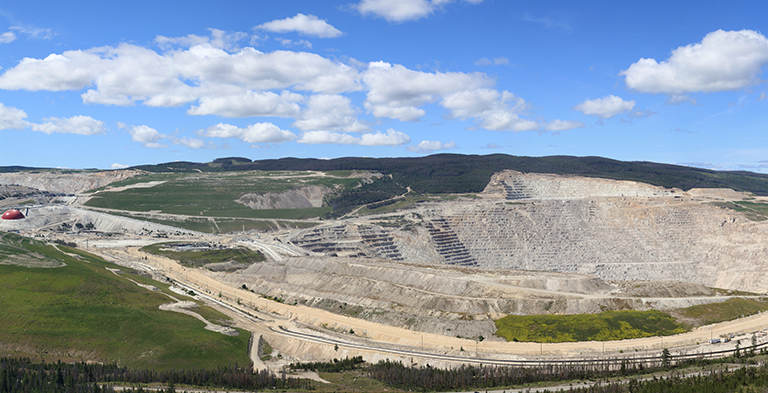Authors
Partner, Regulatory, Indigenous and Environmental, Calgary
Partner, Disputes, Vancouver
Partner, Litigation; Regulatory, Indigenous and Environmental, Toronto
Associate, Disputes, Vancouver

British Columbia is taking a major legislative step towards requiring industrial companies to pay for a significant scale of environmental cleanup if their projects are abandoned.
The province is proposing amendments to its Environmental Management Act, SBC 2003, c 53 (the EMA) that will enable the government to collect, use, and enforce financial assurance requirements through future regulations.[1]
A primer on the EMA
The EMA is one of the primary pieces of legislation governing environmental protection in B.C. It regulates industrial and municipal waste discharge, pollution, hazardous waste and contaminated site remediation. And importantly, it has teeth. The EMA enables the use of permits, regulations and codes of practice to authorize discharges to the environment, and it provides for enforcement tools, such as administrative penalties, orders, and fines to encourage compliance.
The EMA has been amended several times in recent years to reflect changes in environmental policy and to address emerging environmental issues.
The proposed amendments to the EMA
The recent proposed amendments to the EMA are B.C’.s latest effort to further expand its environmental protection regime and, in particular, to attempt to impose significant penalties on companies for their alleged environmental impacts.
The proposed legislation would work to uphold the “polluter pays” principle. This principle places the responsibility for industrial-site cleanup with owners or operators – with those who cause or contribute to pollution arising from industrial facilities. As recently held by the Supreme Court of Canada, the “polluter pays” principle is “a well-recognized tenet of Canadian environmental law”. The Supreme Court explained: “[t]his principle assigns polluters the responsibility for remedying environmental damage for which they are responsible, thereby incentivizing companies to pay attention to the environment in the course of their economic activities.”[2]
How will the polluter pays principle work with the EMA amendments?
If passed, the EMA amendments will impose significant obligations on companies. They will place the responsibility for industrial-site cleanup with the “owners” of facilities that are engaged in certain industrial or commercial purposes with the potential to cause pollution or contamination. “Owners” will be defined broadly to mean persons who are in possession of the facility, have the right to control the facility, or who occupy or control the use of the facility, or even persons with a legal or equitable interest in the facility.
Owners will be required to plan for the decommissioning and closure of their operations. They also will have to provide financial security for environmental cleanup in advance of such decommissioning. High-risk industries regulated under the EMA will be captured by these proposed amendments as “specified facilities”, defined as those used for “a prescribed industrial or commercial purpose or activity”, e.g., those purposes and activities prescribed in Schedule 2 to the EMA’s Contaminated Sites Regulation, including chemical, electrical, mining, metal smelting, petroleum and natural gas, waste disposal, and wood and pulp and paper industries, among others.
In particular, the new proposed legislation would require a person in control of such a facility to prepare and submit a “decommissioning and closure plan” for the facility. Notably,the decommissioning and closure plan could be required even though the substance or thing addressed by the plan (i.e., a potential contaminant) is not prohibited under the EMA.
If a specified facility is deemed “abandoned” by the Ministry of the Environment, environmental officers will have the power to enter the abandoned facility and carry out any actions for the purpose of decommissioning and closing the facility, and to seek cost recovery for those actions against any "accountable person,” including owners or persons in control immediately before operations ceased.
The B.C. government has identified that these amendments serve two goals. First, to ensure the cost of cleanup is not borne by taxpayers but, instead, shifted to companies. And second, to protect B.C.’s natural environment and support its economic future as a leader in green initiatives. George Heyman, B.C.’s Minister of Environment and Climate Change Strategy, stated that the new legislation “will ensure industrial owners and operators whose operations could pollute our environment are accountable for cleanup” and the province is “committed to making sure companies […] support our province's economic future, but also support healthy communities by maintaining the health of our land, air and water.”
Next steps
The proposed amendments to the EMA must still pass several hurdles before they could become law. They will undergo a second reading when the B.C. Legislative Assembly resumes sitting in the fall.
In addition, further details regarding the operational impacts of the proposed amendments, such as more clarity regarding what facilities will be considered “specified facilities”, and the requirements of the proposed decommissioning and closure plan, may not be clear until related regulations are released.
Osler has extensive experience providing advice on environmental regulation and decommissioning and abandonment obligations. If you have any questions regarding how the proposed amendments to EMA may impact your operations, please contact a member of the Osler Environmental Disputes, Investigations and Enforcement group, or the authors of this blog.
[1] Bill 29 – 2023, online at http://www.leg.bc.ca/Pages/BCLASS-Legacy.aspx#%2Fcontent%2Fdata%2520-%2520ldp%2Fpages%2F42nd4th%2F1st_read%2Fgov29-1.htm
[2] Orphan Well Association v. Grant Thornton Ltd., 2019 SCC 5 at para 29.

